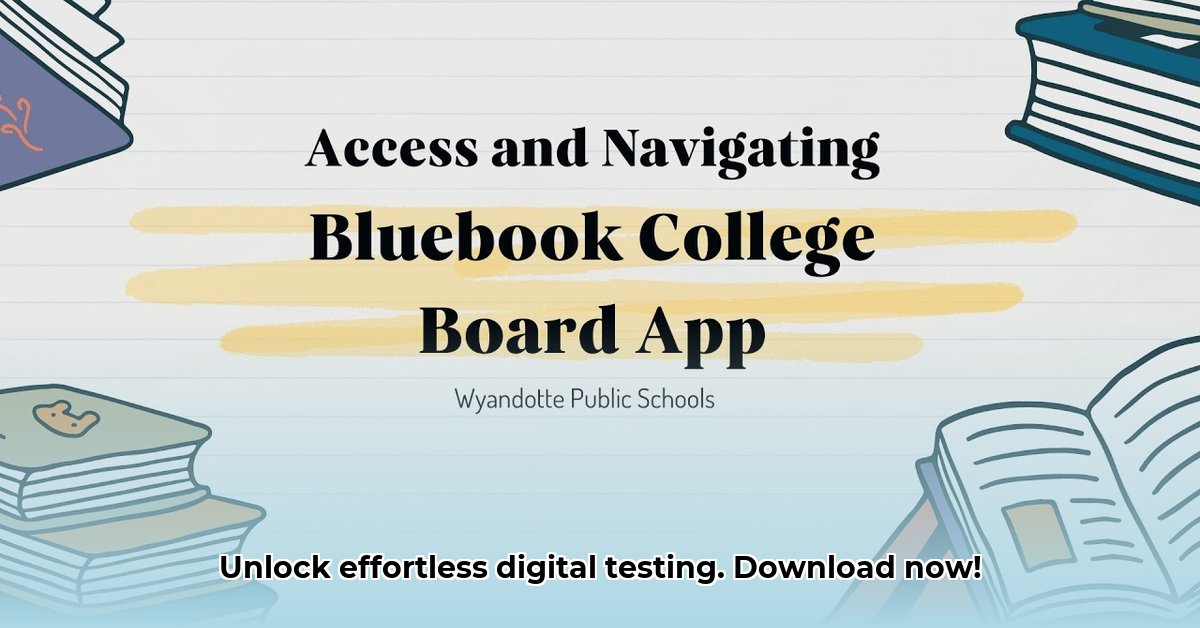
Taking standardized tests can be stressful. But what if there was a way to make the digital testing experience smoother? Bluebook aims to do just that. This comprehensive guide covers everything from downloading and installing the app to understanding its security and accessibility features. We'll also explore alternative options and offer tips for both students and educators. For further installation help, check out this helpful resource.
Downloading and Installing Bluebook: A Step-by-Step Guide
Downloading Bluebook is generally straightforward, but device-specific challenges can arise.
1. Windows and Mac: Download from the official College Board website (https://bluebook.collegeboard.org/) to ensure you get the authentic version. Installation is typically a simple double-click.
2. iPads and Chromebooks: This is where things might get tricky. School-managed devices often require IT department approval and installation. Even on personal devices, adjusting security settings may be necessary. Consult your device's settings for details on managing app installations. Remember that iPads currently require an external keyboard for use with Bluebook.
3. Troubleshooting: Encountering download problems? Check your internet connection and device storage. The College Board's support resources (https://bluebook.collegeboard.org/technology/help/bluebook-troubleshoot) offer further assistance.
Bluebook's Features and Functionality: A Closer Look
Bluebook boasts a clean, intuitive interface designed for ease of use during testing. Post-test, it offers features for educators, including streamlined score reporting and administrative tools. Is this user-friendly approach actually effective for diverse learners? Further research is needed to fully assess its impact.
Security and Privacy: Understanding Data Handling
Security and privacy are paramount. Bluebook employs various security measures to protect test integrity. However, some users feel the privacy policy could be more transparent about data collection and usage. Carefully review the policy to understand what data is collected and how it's used. Are you comfortable with the level of data sharing? This is a key consideration.
Accessibility and Compatibility: Inclusivity in Digital Testing
While Bluebook strives for accessibility, limitations exist. The need for an external keyboard on iPads is a significant constraint. It generally boasts good compatibility across devices and operating systems, but some users may still experience issues. Does this app truly offer equitable access to all students? This is an important question to consider.
Weighing the Pros and Cons: Making an Informed Decision
To help you decide, here's a balanced overview:
| Pros | Cons |
|---|---|
| Streamlined testing process | Potential compatibility issues, especially on school-managed devices |
| User-friendly interface | Requires external keyboard for iPad use |
| (Generally) Robust security measures | Privacy policy could benefit from more transparency |
| Efficient scoring and reporting | Accessibility limitations for some users |
Exploring Alternatives: Other Digital Testing Platforms
If Bluebook doesn't meet your needs, many alternative platforms exist. Research thoroughly to find the best fit for your specific requirements.
Conclusion: Choosing the Right Digital Testing Solution
The decision of whether to use Bluebook depends on your individual circumstances. Consider the pros and cons carefully, especially regarding compatibility and data privacy. For school-managed devices, early communication with the IT department is crucial. Remember to always download from official sources to avoid potential security risks. Downloading the wrong version could compromise your testing experience. Always prioritize secure and reliable downloads.
How to Troubleshoot Bluebook App Issues on School Chromebooks
Successfully using Bluebook in schools requires careful planning and troubleshooting. Common Chromebook issues often stem from school network settings and account configurations.
Common Problems & Troubleshooting Steps
- Account Access: Verify students use the correct account (school-issued or College Board).
- Network Restrictions: Ensure the school network allows Bluebook access (whitelist domains and ports).
- Google Admin Console: Check Google Admin console settings for correct permissions and app deployment.
- App Updates: Keep the Bluebook app updated on all devices.
- College Board Resources: Consult College Board troubleshooting resources for detailed assistance.
- Personal Device Testing: Test Bluebook on a personal device to isolate network issues.
Proactive Strategies for Schools
- Develop a detailed deployment checklist.
- Provide clear user instructions.
- Establish a dedicated support channel.
- Foster collaboration between IT and teachers.
⭐⭐⭐⭐☆ (4.8)
Download via Link 1
Download via Link 2
Last updated: Monday, April 28, 2025